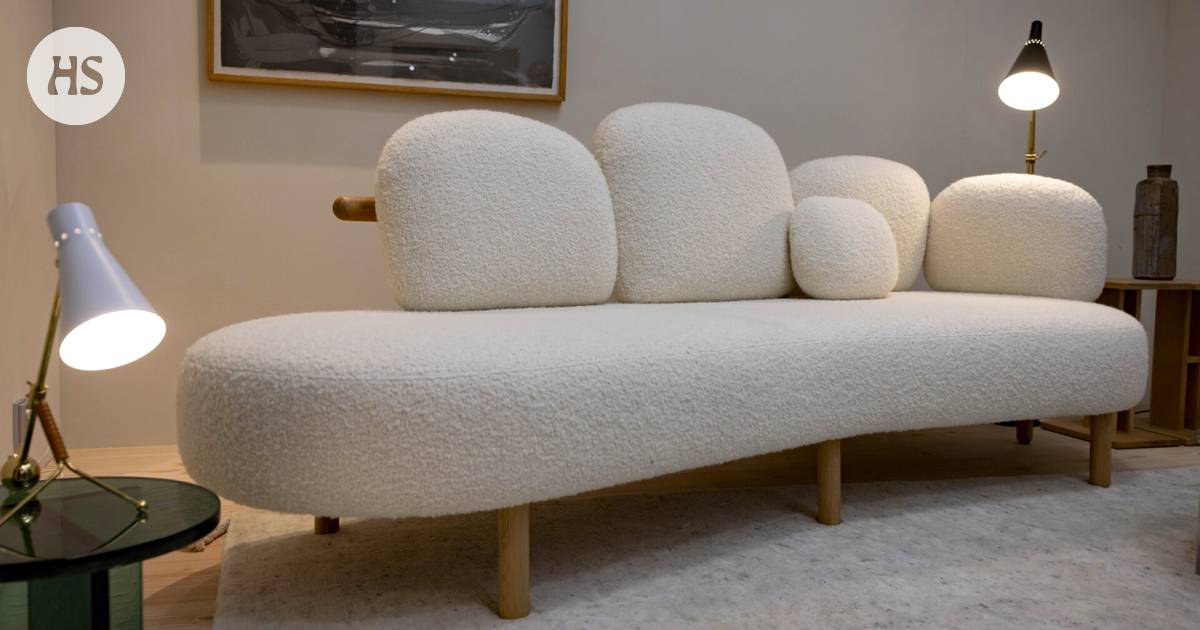Design|Decorating doesn’t have to be about getting new things, reminds Habitare’s creative advisor.
The summary is made by artificial intelligence and checked by a human.
Round shapes, metal and slow decorating are the interior trends of the moment.
Designer Päivi Helander recommends renovating the home with small changes over time.
The kitchens and floors show influences from the 1980s.
The rounds shapes, metal and “slow decoration” – these are the interior design trends of the moment, say industry experts.
Slow decorating means renovating your home with small changes in the long term. When looking for ideas in an interior design magazine or on social media, you may feel that, for example, you need to redo the entire living room at once.
This feeling can be resisted, he says Päivi Helanderdesigner and Guest Creative Advisor at the Habitare interior design fair, which runs until Sunday.
“It’s the antithesis of today’s fast pace. Different stages, patina and imperfection are tolerated. Let’s let the objects find their place with time. Even if the board sits somewhere for a while because you can’t immediately find a place for it on the wall, there’s no need to stress about it.”
The Finnish Faset’s Relax chair is a model brought back from the 1970s by designer Ahti Taskinen.
Faset’s Rento chair combines the most popular materials of the moment: oak and buklee fabric.
The old ones and the coexistence of new objects gives the home character in Helander’s opinion. Decorating doesn’t have to be about getting new things either, he reminds. You can change the position of the furniture or paint the wall in a different color.
According to Helander, slowness and durability can also be seen in new design products. Consumers now value high-quality materials, and designers want to work with wood qualities that were previously less valued or difficult to work with, such as pine and birch.
Roundness and fluffiness can be seen especially in sofas and armchairs.
Registered interior designer, interior designer Maija-Riitta Riuttamäki the eye has been caught by the round shapes, especially in the furniture and lighting.
“For example, the armchairs are round and lap-like with fluffy and soft fabrics,” he describes.
Roundness can also be seen in the lines of the kitchen cabinets and tables, which reminds Riuttamäki of the 1980s. The floors now also breathe Kasari: even in Habitare, instead of a modern pared-down parquet, checkered planks are on display.
“The past decades come back reworked. It can also be seen in the new production of old furniture.”
The color scheme has been broken: burgundy, mustard yellow and olive green can be seen in the furniture and textiles, but also light natural colors still hold their ground.
Patterned parquet floors are making a comeback, says Maija-Riitta Riuttamäki.
Burgundy is one of the trendy colors of the moment.
Finnish Arkken’s kitchen combines round shapes and strong colors.
Gray metal was seen in Habitare, for example, in Blau’s kitchen surfaces.
Decorator Tero Pennanen has been sniffing trends not only at Habitare but also at the Milan furniture fair in the spring.
According to Pennanen, reduced metal is making a comeback in kitchen surfaces.
Interior architect Tero Pennanen.
“Before, there was brass, gold and matte black. Now in Milan gray shades of titanium were visible. Metal sounds uncomfortable, but I think it’s a great material that can get scratched and even rust.”
The patina of time on metal and wooden surfaces should not be alarmed, Pennanen encourages. They bring personality to the home.
Metal also makes an appearance in lighting, impeccably implemented.
“Metal lamps have been on the side of the world, but now metal is allowed to be metal, and it is not powder coated or matte varnished.”
Another trend that Pennanen has noticed is wooden strips. He himself used lattice-like bars ten years ago, for example, in the design of restaurant premises, but now they can also be seen in homes.
“Previously, we drew the bars ourselves and made them with a carpenter. Now Habitare showed several companies that offer them ready-made.”
At the Habitare fair, material samples from manufacturers are on display, which you can see and touch.
